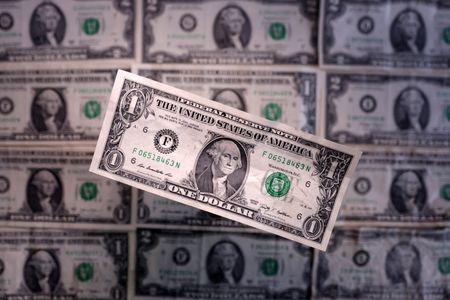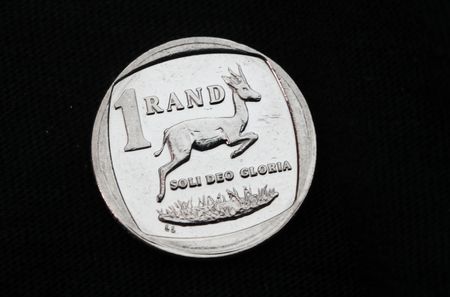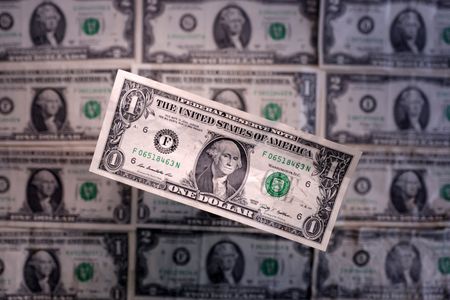By Kevin Buckland, Jaspreet Kalra and Canan Sevgili
TOKYO/LONDON (Reuters) – The U.S. dollar was choppy on Thursday as traders parsed the Federal Reserve’s measured stance on further interest rate cuts, while sterling held steady as the Bank of England kept rates steady and slowed the pace of its government bond sales.
The pound initially edged up after the BoE’s decision, but pared those gains to trade slightly lower on the day at $1.3622. The euro edged up 0.1% to 86.79 pence. Gilt yields dipped, leaving the 10-year bond at 4.612%, compared with 4.639% earlier on.
Sterling had briefly leaped to the highest since July 2 at $1.3726 in the prior session.
BoE policymakers voted 7-2 to slow the annual pace at which the central bank unloads the gilts that it purchased from 2009 and 2021 to 70 billion pounds from 100 billion pounds, broadly in line with a Reuters poll median forecast for it to be cut to 67.5 billion.
“As expected, the BoE has not cut rates, and it is unlikely it will ease monetary policy again this year,” said Marion Amiot, chief UK economist at S&P Global Ratings.
The euro was steady at $1.1830, after retreating from its highest level since June 2021 at $1.19185 on Wednesday in a knee-jerk reaction to the Fed announcement.
The Fed reduced rates by a quarter point on Wednesday, as expected, with Chair Jerome Powell characterising the day’s policy action as a risk-management cut in response to the weakening labour market, but said the central bank did not need to rush easing.
Analysts differed over the signals sent by the Fed. While those at Goldman Sachs said that many hints had pointed to Wednesday’s cut being the first among many, their counterparts at ANZ characterized the Fed Chair’s commentary as “not at all dovish”.
The dollar dropped to the lowest since February 2022 at 96.224 against a basket of major peers immediately after the rate decision, but sprang back vigorously to rise as much as 0.44% on the day. It was last steady at 96.96.
“The (Fed’s) revised forecasts highlighted the degree of uncertainty that remains over the outlook,” said Elliot Clarke, head of international economics at Westpac.
“The timing and scale of the forecast rate cuts also point to lingering risks for inflation.”
NORWAY CUTS RATES, YEN SLIPS AHEAD OF BOJ
The Norwegian crown was also steady in the face of an expected rate cut from the Norges Bank, its second in three months. The central bank signaled rates could continue to fall.
The euro pared gains against the crown after the policy decision was announced and was last down 0.25% at 11.5710.
Elsewhere, the dollar was 0.2% firmer against the Japanese yen at 147.215 ahead of the Bank of Japan’s policy decision on Friday.
The BOJ is widely expected to refrain from hiking rates, although markets price in a quarter-point increase by end-March, with about 50% odds of it happening within this year.
The spotlight is on an October 4 vote where the ruling Liberal Democratic Party will elect a new leader to replace outgoing Prime Minister Shigeru Ishiba, who is stepping down following a bruising defeat in upper house elections.
Data on Thursday showed that New Zealand’s gross domestic product (GDP) fell 0.9% in the second quarter from the previous three months, worse than forecast by analysts and the Reserve Bank of New Zealand.
This weighed on the New Zealand dollar as traders added to bets on policy easing by the country’s central bank, driving the currency down by 1% to $0.59055, the lowest level since September 8.
(Reporting by Kevin Buckland and Jaspreet Kalra and Canan Sevgili; Editing by Sonali Paul, Gareth Jones and Frances Kerry)











